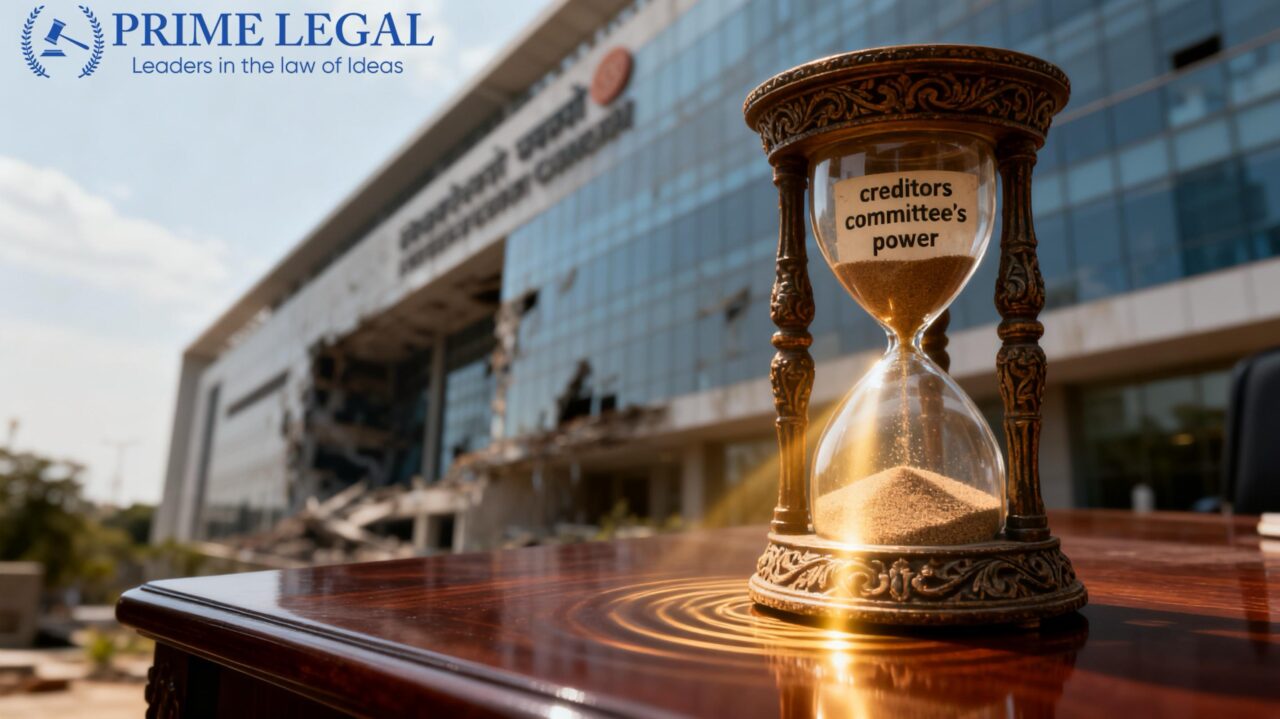INTRODUCTION
The relevance and equity of the judgments made in a corporate insolvency resolution process (CIRP) turned into a debate issue since the enactment of Insolvency and Bankruptcy Code, 2016. The main decision-making authority, particularly in safeguarding the corporate debtor by a sustainable resolution plan, is the Committee of Creditors (CoC). This was deliberately left non-justiciable by the legislature, which did not give reasons why the individual financial creditors or their decisions could be called into question, and thus the decisions could not be called into question on the basis of commercial wisdom. Its critical position, reinforcing the CoC institution by possible interventions such as a code of conduct is deemed critical, so as to make operations run smoothly and to maximize values to all the stakeholders.
BACKGROUNDS
CoC and Resolution Professional. The CoC made the Code the highest, again, temporary, and heterogeneous, decision-making organ within the framework of CIRP, comprising mostly financial creditors. The Financial Creditors are very important because they are more concerned with stakes, they can make decisions about the commercial viability of the CD, and are ready to make risky decisions restructuring their debts to maintain the CD as a going concern.
The basic roles and authority of the CoC is:
- Verifying or disaffirming the Interim Resolution Professional (IRP) as the Resolution Professional (RP).
- Consenting to essential steps taken by the RP, like a rise in interim finance, security creation, alteration in the capital structure or management, or the delegation of powers of the RP.
- Establishing the viability and feasibility of the business of the CD, and then deciding to either go ahead with the process of resolving the CD or decides to immediately liquidate the CD in case it believes that the resolution process is doomed to fail.
The Resolution Professional is an appointed insolvency expert registered with the IBBI that is in charge of the day-to-day affairs of the CD and that manages the process. The responsibilities of the RP also involve gathering and accepting creditors’ claims, create the CoC, administer the business of the debtor throughout the moratorium, invite resolution proposals, and present them to the CoC. Importantly, the RP can act in accordance with what the CoC has to say.
The judicial review that the Adjudicating Authority (NCLT) can use is restricted to assure that CoC has taken into account such crucial aspects as the maximization of asset value, the preservation of CD as a going concern, and the interests of all stakeholders, including operational creditors. But the AA has no right to meddle in the contents of the commercial decision made by the CoC.
KEYPOINTS
Continued Existence Post-Approval A key issue discussed within the area of jurisprudence is whether CoC becomes functus officio (loses authority) following the NCLT approving a resolution plan under Section 31. The Supreme Court has made it clear in the JSW Steel case that the CoC does not do away with itself once NCLT approval has been made:
- The CoC will last until the resolution plan is applied or liquidation is requested in accordance to Section 33 of the IBC.
- This is backed by the Explanation to Regulation 18 of the IBBI (CIRP) Regulations which allows CoC to meet until the plan has been approved under Section 31(1) or liquidation has been passed under Section 33.
- The CoC still has a vested interest in the Resolution Plan until the day it is actually carried out and creditors are paid.
- Monitoring and supervising implementation of the Resolution Plan is also within the powers of the CoC, either directly by constituting a Monitoring Committee or indirectly.
Arguments that the former promoters or the CoC could request the distribution of EBITDA earned in the CIRP period were rejected by the Supreme Court because neither the Request for Resolution Plan nor the Resolution Plan addressed its distribution.
RECENT DEVELOPMENT
IBC Amendment Bill, 2025 The Insolvency and Bankruptcy Code (Amendment) Bill, 2025, presented to the Lok Sabha on August 12, 2025, includes major reforms which are supposed to bring efficiency, predictability, and governance:
- The Adjudging Authority (AA) will be required to mandatorily admit insolvency applications at the demonstration of default and in line with the IBC, making it consistent and prompt in the process of commencing.
- Liquidation has to be done in 180 days, but there may be no more than one 90-day extension. Additionally, the Bill suggests the improvement of the role of creditors in the course of liquidation which explains why CoC is still involved.
- Proposals are made as to new frameworks to be used in complex corporate structures such as Group Insolvency (coordination among group entities and possibility of a shared RP), and a structure of Cross-border Insolvency (based on UNCITRAL Model Law principles).
CONCLUSION
The IBC-led framework is guided by the commercial wisdom of CoC in an attempt to realise transparent, objective and time-bound corporate resolution with liquidation as the last resort measure. Nevertheless, there remain difficulties, in particular with regard to compliance with statutory deadlines, the average times of resolving issues with a wide range of over 330 days. Recent legislative proposals, including the IBC Amendment Bill, 2025, are aimed at sealing these loopholes and tightening time frames, regulatory governance, and group and cross-border insolvency frameworks. In general, introducing effective principles and procedures, including transparency, upfront due diligence, and accountability, remains the key to enhancing the CIRP and creating a value that will benefit all the stakeholders.
“PRIME LEGAL is a full-service law firm that has won a National Award and has more than 20 years of experience in an array of sectors and practice areas. Prime legal falls into the category of best law firm, best lawyer, best family lawyer, best divorce lawyer, best divorce law firm, best criminal lawyer, best criminal law firm, best consumer lawyer, best civil lawyer.”
WRITTEN BY Manisha Kunwar


